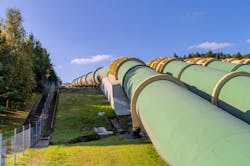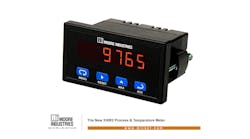A small business based in Wilbraham, Massachusetts, developed a new, efficient separation technology to help clean produced water in the oil and gas industry.
FloDesign Sonics received $1.6 million in funding from the National Science Foundation (NSF) to support its work on the technology, which uses acoustic waves to continuously capture and separate substances from water or other liquids without using filters or chemicals.
Produced water is the water that comes to the surface when oil and gas are extracted. It contains naturally occurring hydrocarbons, salt, bacteria, radioactive material and other compounds, as well as chemical additives used in the extraction process.
FloDesign Sonics’ patented system, called Acoustic Wave Separation (AWS), was designed to treat produced water from hydraulic fracturing operations that extract natural gas. Up to 100,000 gallons of produced water per day can be generated at a single fracking site.
“It’s challenging for current technologies to remove particles smaller than 20 microns without the addition of chemicals,” said Jason Dionne, co-founder and senior engineer of FloDesign Sonics. “AWS separates particulates, oil droplets, sand and bacteria as small as 1 micron.”
According to the company, produced water treated with the AWS system meets or exceeds the U.S. Environmental Protection Agency‘s standards for safe discharge.
“With NSF funding, we have scaled up our technology to an industrially relevant scale,” Dionne said. “We now have a 7,000 gallon per day prototype that we are ready to pilot with a partner. The ultimate goal for our technology within the oil and gas industry is to build a system capable of processing 100,000 gallons per day.”
Compared with current methods for treating produced water, AWS would reduce energy and chemical usage by up to 75 percent, Dionne claimed.
The technology also has potential for separations in other sectors, such as life science. As well as being gentle on living cells, which can be damaged when separated by traditional methods, the technique also is able to separate particles of any size, overcoming a limitation of current filtration techniques, the NSF said.
FloDesign Sonics demonstrated its separation technology at the White House Water Summit on March 22.


